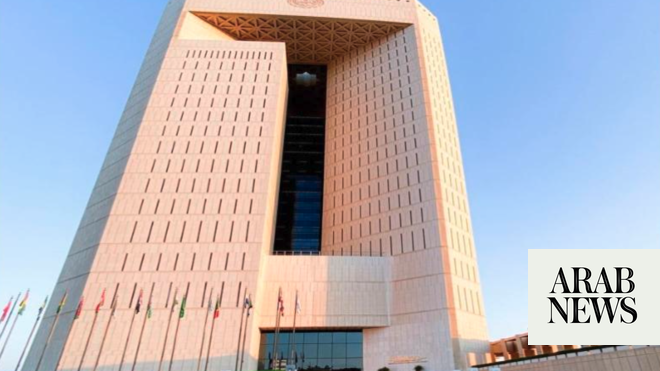RIYADH: Banks in the Gulf Cooperation Council aim to diversify their business models and increase profitability by entering high growth markets such as Turkey, Egypt and India. , says a new report.
Fitch Ratings notes that this growing interest is due to good economic conditions and good growth opportunities in these countries.
It should be noted that the desire to expand in Turkey has increased after the change in macroeconomic policies, while interest in Egypt is driven by greater stability and the possibility of privatization.
Despite higher acquisition costs in these regions, the report said GCC banks remain focused on using the market's strength to offset slower growth at home.
The GCC banking sector has consistently delivered high returns on equity and impressive valuations by global standards, according to a McKinsey June report.
The strategic diversification of the GCC economy beyond oil, along with a prudent management system, has strengthened the bank's stability and profitability.
The increase in interest rates further boosted the bank's profits, and contributed to its returns. In the past decade, banks in the region have exceeded the global average in return on equity, or ROE, maintaining a three to four percent profit during 2022 to 2023 .
Although global bank valuations are historically low, GCC banks continue to deliver value with ROE exceeding cost of equity.
Despite record profits driven by high interest rates for global and GCC banks, McKinsey warns executives to balance short-term gains with strategic goals permanent.
Investing in transformation and transformational efficiency is critical to maintaining competitiveness as interest rates decline.
The spread of GCC banks outside their home region was concentrated in Turkey and Egypt, where they held $150 billion in cash at the end of the first quarter of 2024, according to Fitch Rating.
This significant presence underlines the strategic importance of these markets for the growth objectives of GCC banks.
In addition, there is growing interest in India, especially from banks in the UAE, driven by the strong and expanding financial and trade ties between the two countries.
Turkey, Egypt and India all have larger populations compared to the GCC countries, which shows the potential for growth in the banking sector due to the prospect of higher GDP growth and a smaller banking system.
For example, the banking system's assets to GDP ratio in these countries is less than 100 percent, but in the largest GCC market, this ratio is over 200 percent. according to the report.
In addition, the private debt to GDP ratio was lower in 2023, standing at 27 percent in Egypt, 43 percent in Turkey, and 60 percent in Turkey. -hundreds in India, which highlighted the important place to expand these banking sectors.
GCC banks are planning to expand in Turkey due to positive changes in macroeconomic policies in the country after last year's presidential election, Fitch said.
These changes have reduced external funding pressures and improved economic and financial stability, prompting Fitch to upgrade its outlook for the Turkish banking sector to “improve.”
Fitch expects Turkish inflation to fall from 65 percent in 2023 to 23 percent in 2025, with the expectation that it will end the use of credit reporting. hyperinflation for Turkish companies GCC banks in 2027.
The increased stability of the Turkish Lira may strengthen the recovery of GCC banking activity.
At the same time, GCC banks are showing a growing interest in Egypt, driven by a better macroeconomic environment, opportunities from the privatization program, and the expansion of GCC companies in Egypt. the country.
Fitch recently upgraded its outlook on the Egyptian banks' operating environment score to positive, pending greater economic stability.
This improvement comes from the foreign direct investment agreement with the United Arab Emirates, a strengthened international financial agreement, an increase in the foreign exchange rate, and a stronger commitment to structural reforms.
Fitch expects the asset position of Egyptian banks to improve significantly this year, supported by portfolio inflows, remittances and tourism revenues.
Egyptian inflation is expected to drop from 27.5 percent in June 2024 to 12.3 percent in June 2025, which could lead to a reduction in interest rates starting in the fourth quarter of 2024.
Fitch noted that while the Egyptian banking market has high entry barriers, GCC banks may see opportunities to acquire stakes in three banks through the privatization program.
The expansion of GCC companies, especially those from the UAE, could increase the presence of GCC banks in Egypt.
However, the rising cost of acquiring banks in Turkey, Egypt and India may pose a challenge to GCC bank acquisition plans.
Book rates rose, particularly in Turkey and India, reflecting a better macroeconomic outlook and reduced operational risks. Acquisitions in these low-rated markets may reduce the GCC bank's overall profitability, depending on the size of the business acquired and the profile of the proceeds.
However, almost all GCC bank defaults are supported by government support and are unlikely to affect these acquisitions. In this context, economic forecasting plays an important role in developing these expansion strategies.
The World Bank has updated its growth forecasts in April for various countries, reflecting the timing and key risks.
For example, the economic growth forecast in Saudi Arabia for 2025 has risen to 5.9 percent, compared to the previous estimate of 4.2 percent, which indicates a long-term sustainable outlook.
For the United Arab Emirates, it is now 3.9 percent for 2024, up from 3.7 percent, and rising to 4.1 percent in 2025.
Kuwait and Bahrain are also expected to see modest growth, while Qatar's forecast has dropped to 2.1 percent in 2024 but raised to 3.2 percent for 2025.
